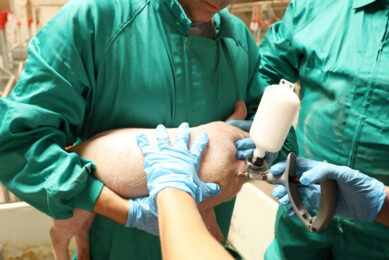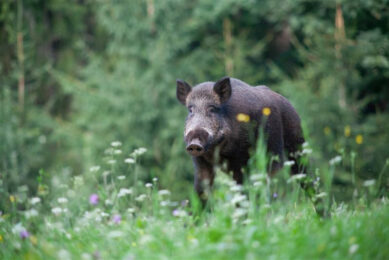Mycoplasma: Still a disease to worry about

Interview with Prof Dr Dominiek Maes: Before the world knew of PRRS and PCV2, Mycoplasma hyopneumoniae was one of the diseases receiving much attention. Even nowadays, there is still a lot to be learnt, explains Prof Dr Dominiek Maes, Ghent University, who will speak on the disease at the Congress.
Although many M. hyo infections are subclinical, they are known for causing a dry, almost permanent cough in pig herds. In practical circumstances, predominantly disease patterns can be seen in combination with secondary bacterial and viral infections, causing more severe types of coughing with more severe clinical signs. This in turn will lead to poor growth – or even result in death. Although currently not as widely researched in laboratories as PCV2 or PRRS, M. hyo is still a disease causing a lot of problems for pig producers worldwide, says Prof Dr Dominiek Maes, professor in swine medicine at Ghent University, Belgium. “In my view – and that of many others – Mycoplasma remains a very important agent causing a lot of economic damage for pig production in Europe and the rest of the globe in different types of production systems. It is not a very visible disease, like PMWS or HP-PRRS, but it is always there, chronic, subclinical and making pigs more susceptible for loads of other infections. Many studies have been carried out with combined infections – and they showed that it’s predominantly the Mycoplasma infections making the pigs susceptible for other infections, not the other way round.”
One of the reasons for the somewhat reduced attention for M. hyo may be hidden in the fact that the clinical and pathological consequences of the disease can be reduced significantly by e.g. vaccination. Maes says control of the disease is definitely not the same as elimination of the pathogen from the herd.
“Worldwide, a lot of vaccination is being done and in Europe, more than half of the farms vaccinate for M. hyo. These vaccines reduce lung lesions, improve animal performance, growth, feed conversion, medicine use, and so on. The vaccines, however, are not capable of eliminating the agent. To go short, animals that are vaccinated well can still be infected and can still transmit the pathogen. The infection pressure will be lower, but the bacteria will not be eliminated. If vaccination is stopped, the infection levels will rise again and the herd will return to the situation before vaccination. Maes explains that on the other hand, the disease is also considered to be a tough one as it is difficult to isolate the organism. “This process is expensive, takes a long time and it’s not a very easy pathogen to work with. In case of viral infections, the efficacy of control measures can be assessed e.g by monitoring viraemia levels. In case of M. hyo it is more difficult to quantify the Mycoplasma levels in the pig.”
Difference in virulence
Maes continues, “Research is being done at Ghent University to find out the interactions between M. hyo and the respiratory tract of the animal, and how to reach better results in vaccination and better control mechanisms.” “At the moment not a lot is known about the exact importance of differences in virulence and the practice in pig farms. We do a lot of research in this direction and we have just developed a test for detecting strain differences without the need to isolate the microorganism. This should help us get a better insight into the strains’ diversity and their on-farm interaction with each other and other pathogens. In most pig farms, it isn’t a problem to show M. hyo presence, it’s the challenge to find out which pathogen is predominantly causing the problems. This is a real challenge for pig practitioners.”
“At the congress, I intend to give an update on M. hyo infections in pigs, with the focus on applied research findings relevant for practice. With regard to control, I will focus on the reduction of risk factors on one hand and medication and vaccination on the other. I think the
audience will be mainly interested in questions like which vaccination strategies to use? And which vaccines? Do they all work? And last but not least – what are future perspectives and can we eventually eliminate the disease?”











